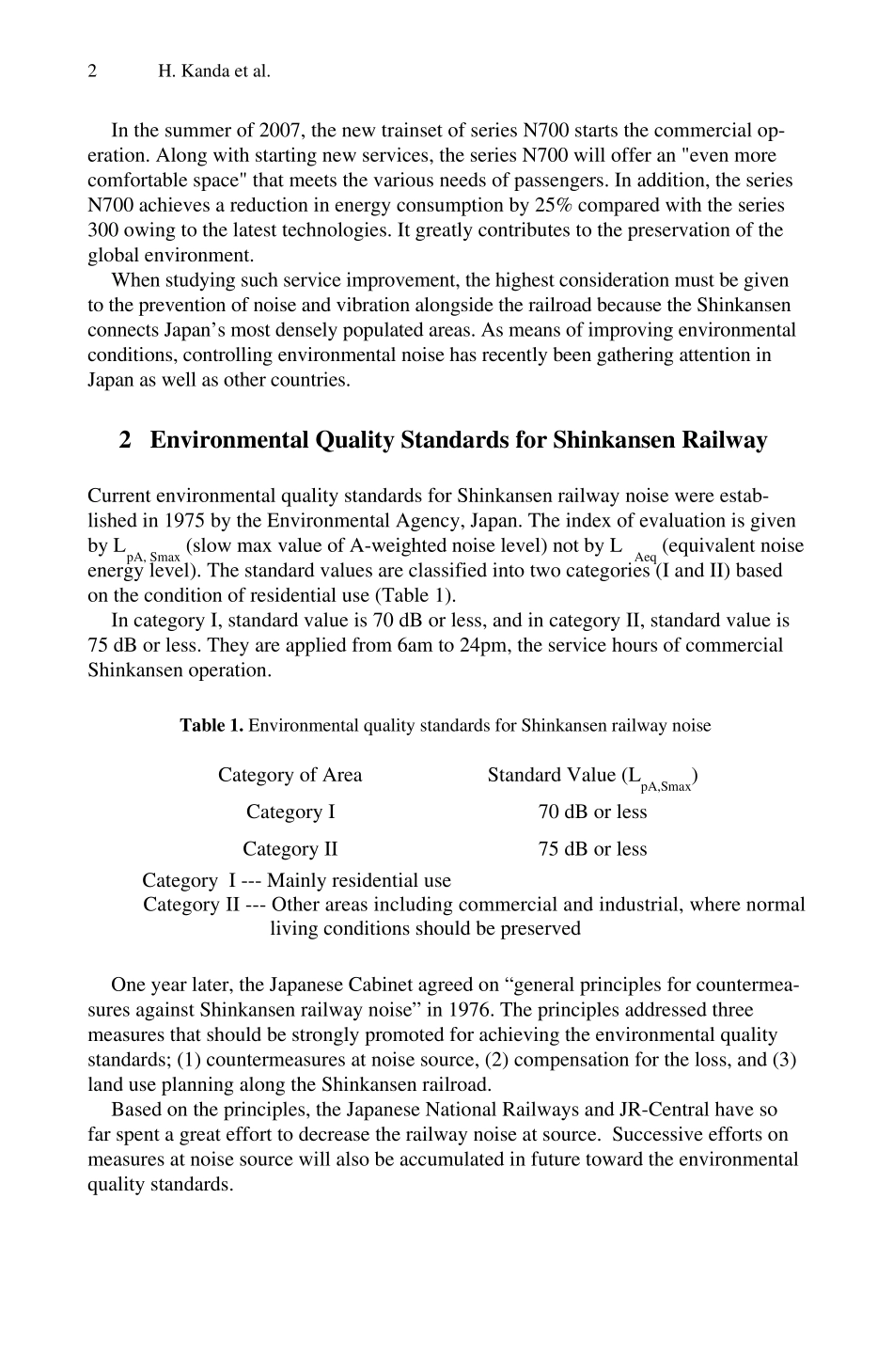B. Schulte-Werning et al. (Eds.): Noise and Vibration Mitigation, NNFM 99, pp. 1–8, 2008. springerlink.com © Springer-Verlag Berlin Heidelberg 2008 Environmental Noise Reduction of Tokaido Shinkansen and Future Prospect Hitoshi Kanda, Hideaki Tsuda, Kimihiro Ichikawa, and Shohei Yoshida Technology Planning Department, General Technology Division Central Japan Railway Co., 2-1-85 Kounan, Minato-ku, 109-8204 Tokyo, Japan Tel.: +81 3 6711 9580; Fax: +81 3 6711 9707 h-kanda@jr-central.co.jp Summary This paper describes the technical review of the environmental noise reduction of Tokaido Shinkansen and its future prospect. Current environmental quality standards for Shinkansen railway noise were established in 1975 by the Environmental Agency, Japan. The Japanese Cabinet agreed on “general principles for countermeasures against Shinkansen railway noise” in 1976. Based on the principles, Central Japan Railway Company has spent a great effort to reduce the railway noise at source. Ow-ing to measures, the wayside noise has been remarkably decreased. On the other hand, the land use planning has not been strongly enforced. So there are regrettably some problems on later inhabitants along the Shinkansen railroad. This paper also discusses the noise evaluation. A present Shinkansen noise index is given by L Amax (peak noise level). It is reasonable to assume that the index will be shifted to L AEQ basis, since it has been widely applied. In order to study the effect of LAEQ standard, it seems important to investigate theoretical and scientific aspects of noise evaluation in other countries. 1 Introduction Central Japan Railway Company (JR Central) commenced operations in April 1987 upon the privatization of the Japanese...


